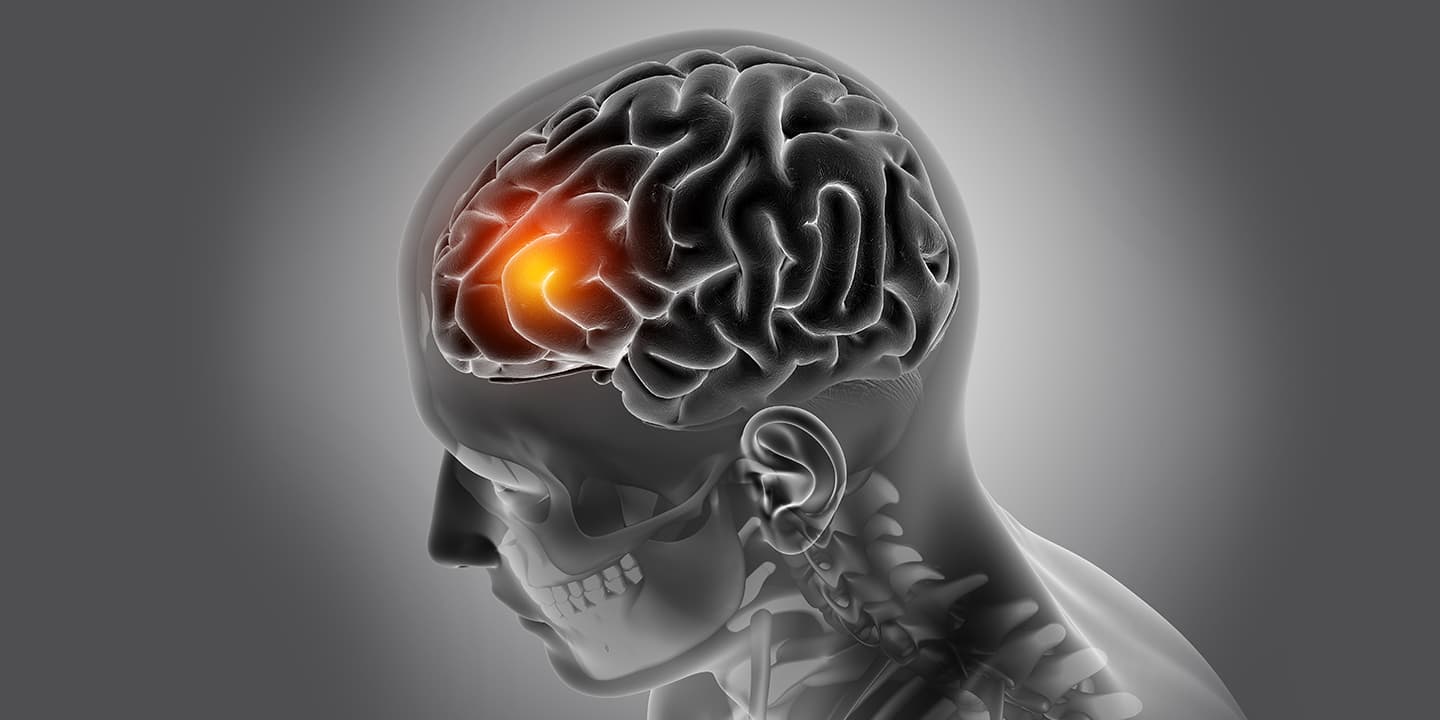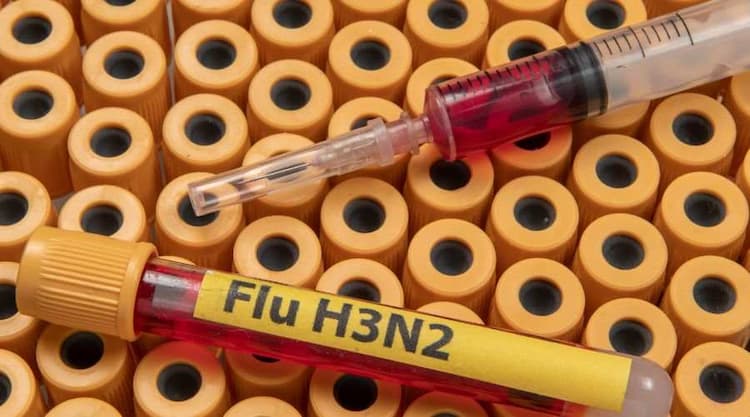Brain Tumour: Causes, Symptoms and Treatment

Medically Reviewed By
Dr. Ragiinii Sharma
Written By Prekshi Garg
on Oct 17, 2022
Last Edit Made By Prekshi Garg
on Mar 18, 2024

Tumours can form anywhere in your body and can either be cancerous or noncancerous. If you suspect you have a brain tumour, you should first consult a doctor.
There are many kinds of cancer, and a doctor can diagnose one by looking at your symptoms. The doctor can order various tests to determine the presence of a brain tumour and determine the type of treatment.
The most common symptom of a brain tumour is a headache. This may occur suddenly or gradually and can be intermittent or persistent. Other brain cancer symptoms may include a disturbance in vision, hearing, or smell.
The treatment for a brain tumour depends on the type of cancer and its stage. Treatment options can either remove the entire tumour, slow its growth, or reduce its symptoms. Patients should discuss the treatment options and side effects thoroughly with their doctors.
If you want to know more about the causes, symptoms and treatment of brain tumours, continue reading this article.
What Is Brain Tumour?
A brain tumour is a mass of brain tissue containing cancer cells. These cells grow rapidly and can interfere with vital brain functions. They are life-threatening and can spread quickly to other areas of the brain.
There are two main types of brain tumours: benign and malignant. Benign tumours do not contain cancer cells and grow slowly. They usually do not spread to other areas of the body but can still be dangerous. Malignant tumours contain cancer cells and invade surrounding brain tissue.
Brain cancer symptoms can vary widely. Headaches are a common symptom, and the severity may vary depending on the area of the brain. A CT scan or MRI will be necessary to confirm the diagnosis. A PET scan is also used to help doctors understand how the tumour functions.
What Are Brain Tumour Symptoms?
The signs of a brain tumour vary depending on where the tumour is located. If the tumour is in the frontal lobes, it can affect the person's ability to think. They may also experience a change in personality and mental confusion. They may also experience problems swallowing or speech. These problems can make it difficult for people to speak properly or have trouble finding words.
The symptoms of a brain tumour are different in each person, depending on the type of tumour. To better understand these symptoms, you must understand how the brain works. Learning more about brain functions can help you know the signs of brain tumour.
If you're experiencing tumour symptoms, you should talk to your healthcare team to get a thorough diagnosis. They may be able to suggest lifestyle changes or prescribe medication that will control the symptoms. Here are some of the common brain tumour symptoms.
- Headaches
- Difficulty thinking and speaking
- Seizures
- Personality changes
- Vision issues
- Weakness or paralysis
- Hearing issues
- Balance problems
- Dizziness
- Nausea or vomiting
- Facial numbness or tingling
- Confusion or disorientation
- Memory loss
- Changes in ability or hearing of smell
- Difficulty swallowing
- Hand tremors
- Loss of bladder control
- Changes in mood
A brain tumour is a life-threatening condition and can get worse with time. As there are different types of tumours, proper diagnosis is required. Brain MRI or CT scan is often the test of choice for detecting brain tumours. Early detection is the key to successfully curing this disease. The undiagnosed tumour can grow in size and can lead to severe life complications. So, make sure you get a timely diagnosis of a brain tumour if you experience symptoms like frequent headaches, weakness, memory issues, difficulty walking, loss of vision, etc.
What Are Brain Tumour Causes?
Brain tumours can be a real threat, especially when they are near or within sensitive areas of the brain. Treatment is crucial to ensure the best possible outcome. There are many different types of treatment, and the right one will depend on the type and size of the tumour.
Brain tumours form when certain genes on the chromosomes of cells don't function correctly. However, researchers don't know the main reason behind the occurrence of tumours. When the normal cells develop changes in their DNA, it leads to the formation of a mass of abnormal cells that results in a tumour.
While there is not much information about the causes of brain tumours, there are certain risk factors that increase the chances of developing this problem. Here are the risk factors.
- Family History
About 5 to 10% of cancers are inherited. While it is rare for a brain tumour to be inherited, family history still puts you at risk. If several people in your family are diagnosed with a tumour, it is best to get tested. Certain inherited conditions may also raise the risk of developing tumours.
- Age
A brain tumour may occur at any age; the risk increases with age. Older people are more likely to develop tumours.
- Chemical Exposure
There are several known risk factors for brain tumours. These include exposure to electromagnetic fields, N-nitroso compounds, and head trauma. Being exposed to certain chemicals increases the risk of developing a tumour.
- Exposure To Radiation
Although the exact cause of brain cancer remains unknown, certain factors are known to increase the risk of developing the disease. Exposure to ionising radiation, which is typically delivered to the neck and head, is one such factor.
- No History Of Chickenpox
The risk of developing brain tumours is higher in people with no history of chickenpox than in those with a history of chickenpox. However, the association between chickenpox and gliomas is not yet fully understood.
Types of Brain Tumours
There are several types of brain tumours, and each has its own set of treatment options. Treatments depend on the type of cancer, the results of tests, and the preferences of the patient.
The most common type of brain cancer is meningioma, which accounts for 25% of all primary tumours. These tumours are most common in women and tend to be slow-growing and benign. Here are the common types of benign and malignant brain tumours.
Types of Benign Brain Tumours
Benign brain cancer can cause symptoms like vision problems, speech difficulties, or difficulty walking. This type of tumour doesn't spread to other parts of the body and is less risky. Here are some common types of benign brain tumours.
- Chordomas
It is a slow-growing tumour that normally forms at the base of the skull or bottom of the spine. As they grow slowly, they are difficult to remove without major surgery. It is mostly benign.
If a chordoma is suspected, a doctor will perform a biopsy. Brain tumour surgery is the most common treatment for chordomas.
- Gangliocytomas
Gangliocytomas are well-circumscribed neuroepithelial tumours that are benign and curable with complete resection. It is a rare tumour that forms in the nerve cells. A typical gangliocytoma consists of large multipolar neurons that have a dysplastic appearance.
- Glomus jugulare
A benign brain tumour of the glomus jugulare region may not cause symptoms, but its presence can pose an important safety risk. The tumour is located near important nerves and blood vessels at the base of your skull on top of the jugular vein.
- Meningiomas
Although they are not considered life-threatening, meningiomas may cause considerable discomfort. They can grow anywhere on the skull but are most often seen in the supratentorial regions. Patients with multiple meningiomas generally have a poorer prognosis than patients with single tumours.
- Pituitary Adenomas
The pituitary gland is responsible for secreting hormones such as prolactin, and any tumour that affects it is classified as a pituitary adenoma. There are two types of pituitary adenomas: microadenomas and macroadenomas. Each type has its own characteristics and symptoms.
- Schwannomas
Although most schwannomas are benign, they can cause symptoms that can be similar to other medical conditions. Because these tumours grow slowly, symptoms may be very subtle. Imaging tests and hearing and balance tests can help to diagnose schwannomas.
- Pineocytomas
It is a type of slow-growing tumour that forms in your pineal gland. It is located deep in your brain and secretes the melatonin hormone.
- Craniopharyngiomas
This tumour arises from a part of the pituitary gland. This type of tumour is very difficult to remove as it forms near critical structures of your brain.
Types of Malignant Brain Tumours
There are several different types of malignant brain tumours. These include Astrocytoma, Ependymomas, Glioblastoma, and Oligodendroglioma. Each of these types has unique characteristics and requires a unique approach.
- Astrocytoma
Astrocytomas are malignant brain tumours that grow from the astrocytes that support the nerves in the brain. They are found in the cerebrum and cerebellum. Astrocytoma is one of the most common types of brain tumours, accounting for more than 80 per cent of all brain cancer diagnosed.
- Ependymomas
This type of tumour arises in the ependymal lining of the ventricular system. They typically occur in the fourth ventricle or in the lateral recesses. However, ependymomas can also arise on the surface of the lateral or third ventricles. Chemotherapy is the treatment of choice for certain patients with ependymoma.
- Oligodendroglioma
Oligodendrogliomas are a type of brain tumour that develops from glial cells called oligodendrocytes. These cells form the fatty covering of nerve cells in the brain and spinal cord. These tumours are generally slow-growing and start in the brain, but they can also start in the spinal cord.
- Medulloblastoma
This is another type of fast-growing malignant brain tumour. Symptoms of medulloblastoma can range from headaches to nausea. Fortunately, medulloblastoma can be cured in many cases with aggressive treatments. Surgical removal of the tumour is usually the first step in treatment.
Brain Tumour Treatment Options
There are several options for treating brain cancer, including surgery and radiation therapy. The type of treatment depends on several factors like location, size and type of tumour along with age and overall health of patients. Here are the common brain tumour treatments.
- Brain Tumour Surgery
Brain tumour surgery can be a successful treatment for brain cancer. The procedure involves removing or reducing a brain tumour and taking a tissue sample for analysis. The procedure can also help relieve tumour symptoms caused by the tumour pressing on the brain. A neurosurgeon typically performs the procedure. They are trained to operate on the brain and spinal cord. While brain cancer can be treated using traditional surgery, technological advances have led to non-invasive options and improved recovery times.
- Radiation Therapy
Radiation therapy for brain cancer uses high-energy rays that target the tumour. Patients typically have several sessions over a few days. The amount of radiation varies based on the type of tumour and the patient's age. The radiation also depends on where the cancer has spread. Some patients undergo focal radiation treatment to target the tumour in a small area. This type of treatment has less risk of side effects. This type of therapy is used to kill cancer cells and shrink the tumour.
- Brachytherapy
Brachytherapy is a radiation therapy used to treat brain cancer. The treatment has been around for almost a century, with its origins in the early 1900s. It involves surgically placing radioactive seeds near the tumour to destroy it. In the 1950s, the development of the stereotactic headframe allowed for greater precision in the placement of isotopes.
- Chemotherapy
Chemotherapy is a form of cancer therapy that can be used to treat brain tumours. This type of treatment is usually given to patients with low-grade brain tumours, but some higher-grade tumours may also respond to chemotherapy. Your healthcare team will determine your treatment options and recommend the right course of action for your specific case. This can include a combination of surgery, radiation therapy, and chemotherapy.
- Immunotherapy
Immunotherapy has been shown to be effective in treating many types of brain cancer. Most patients will benefit from this treatment, as it is safe and has a high success rate. Immunotherapy is a treatment method that uses the body's natural defences to attack the cancer cells infected with certain substances. It is a promising approach that may help find new ways to fight brain cancer.
- Targeted Therapy
Brain cancers are relatively rare compared to other forms of cancer, yet their morbidity and mortality are significant. Targeted therapy uses drugs to target specific features in the cancer cells. It is done without harming healthy cells.
- Active Surveillance
Active surveillance is a type of cancer treatment that can delay the need for more invasive treatments. The process involves monitoring the cancer patient's health by periodically doing tests and exams to check on its progress. Treatment is then delayed until symptoms or changes in the tumour suggest that more aggressive treatments are needed.
- Palliative Care
Palliative care for brain cancer is a type of treatment that aims to improve the patient's quality of life while they are receiving treatment for their disease. These treatments can help patients maintain their independence and cope with their treatment's side effects.
- Shunts
Shunts are surgical procedures that drain excess cerebrospinal fluid (CSF) from the brain. The tubes are small and can be inserted into the skull, where they drain the fluid away from the brain. It helps to reduce the pressure within your skull. Overall, shunts proved to be a viable treatment option for patients with brain tumours.
- Drugs Such As Mannitol And Corticosteroids
Pharmacological agents such as mannitol and cortisone can help control the symptoms of brain cancer. However, these medications have side effects and should be used under the guidance of a medical expert. These agents can improve quality of life for a short period of time but are not recommended for long-term use.
Tests for Diagnosis of Brain Tumour
A healthcare provider can perform a variety of tests to determine the presence of a brain tumour. The process typically begins with questions about your symptoms and family history. The next step is a physical examination, which includes checking your reflexes, muscle strength, and coordination. Here are some tests for diagnosis of brain tumour.
- Brain MRI or CT Scan
A doctor often orders a brain MRI or CT scan to diagnose a potential brain tumour. This type of test provides detailed information about the tumour and its location. An MRI uses radio waves and magnetic fields to create detailed images of the body, including the brain. MRIs are preferred when it comes to diagnosing a tumour because they produce more accurate pictures than CT scans.
- Biopsy
While a biopsy is often required for a definitive brain tumour diagnosis, it's not always feasible or even safe to perform. In this type of test, a sample of the tumour is removed for further analysis. It is often riskier than other types of tests. Fortunately, other non-invasive tests can help your doctor determine what type of tumour you have.
- Spinal Tap
A spinal tap is an important diagnostic tool to determine the presence of cancer cells in the brain. The process uses a thin, hollow needle to collect cerebrospinal fluid from the spinal canal. This fluid is then analysed for any signs of inflammation, infection, or disease.
- Angiogram
Angiograms, which are X-rays, are also helpful in determining the type of tumour. These scans can detect inflammation, infection, or cancer cells in the cerebrospinal fluid. Cancer cells can appear in cerebrospinal fluid for various reasons, including metastatic cancer that has spread from other parts of the body.
- PET Scan
A PET scan is an imaging test that shows how the body's cells look and function. The scan can help doctors diagnose brain tumours. The process involves administering an intravenous dose of a radioactive drug, or radiotracer, to the patient.
- Specialised Tests
Various specialised tests can help diagnose a brain tumour. One test uses radioactive antibodies to detect antigens in tissue samples. These antigens are produced by cancer cells, and their distinct staining under a microscope indicates the type of cancer present. Another test looks for changes in chromosomes, which can indicate cancer.
FAQs
- What is the Main Cause of Brain Tumours?
The most common cause of brain tumours is damage to a gene responsible for cell division and repair. When normal cells develop a mutation in their DNA, it leads to the formation of abnormal cells, i.e. tumours.
- What Are the Early Signs of Brain Tumour?
Brain tumour early symptoms are headache and seizures. These occur when the brain's neurons begin to fire uncontrollably. Other signs include weakness, vision loss, speech problems, etc.
- Can a Brain Tumour Be Cured?
Yes, a brain tumour can sometimes be cured if detected early on. Although the outlook for a person with a tumour is uncertain, various treatments are available. Most treatments aim to remove as much of the tumour as possible.
Conclusion
Brain tumours are one of the most common types of cancer in the world. It can be benign or malignant and can include symptoms like headaches, difficulty speaking, thinking, concentration problems, vision problems, etc. There are many different types of brain tumours, and early detection is necessary. Treatment for brain cancer depends on the location and type of tumour and how quickly it grows. So, if you experience any symptoms, consult a doctor and get tested immediately.



